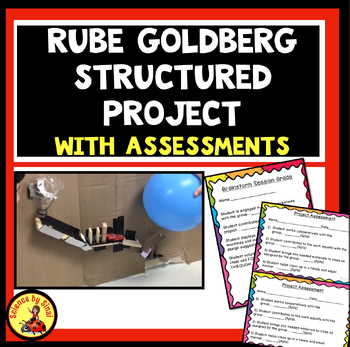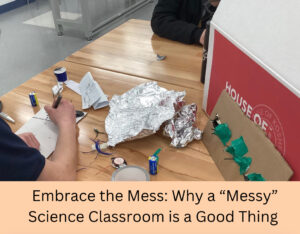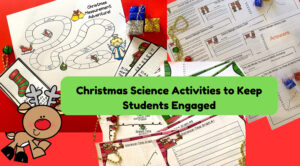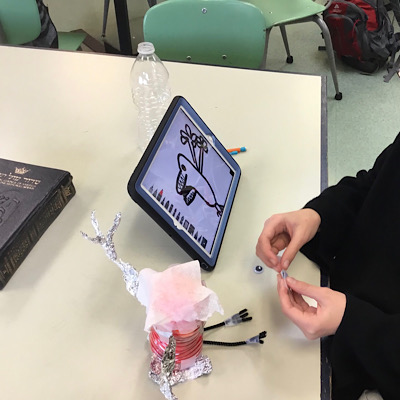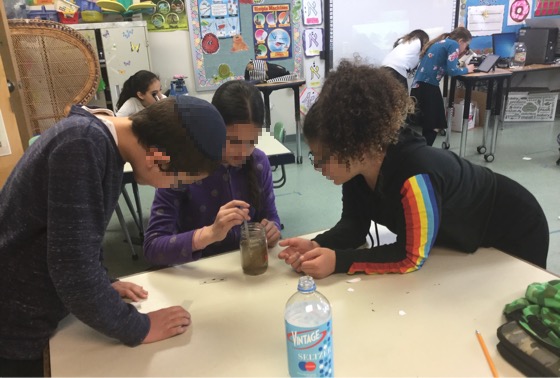Embracing The Mess: Why a “Messy” Science Classroom is a Good Thing
Do you have a messy science classroom? Are supplies scattered everywhere, with half finished designs, and your students are buzzing with excitement?
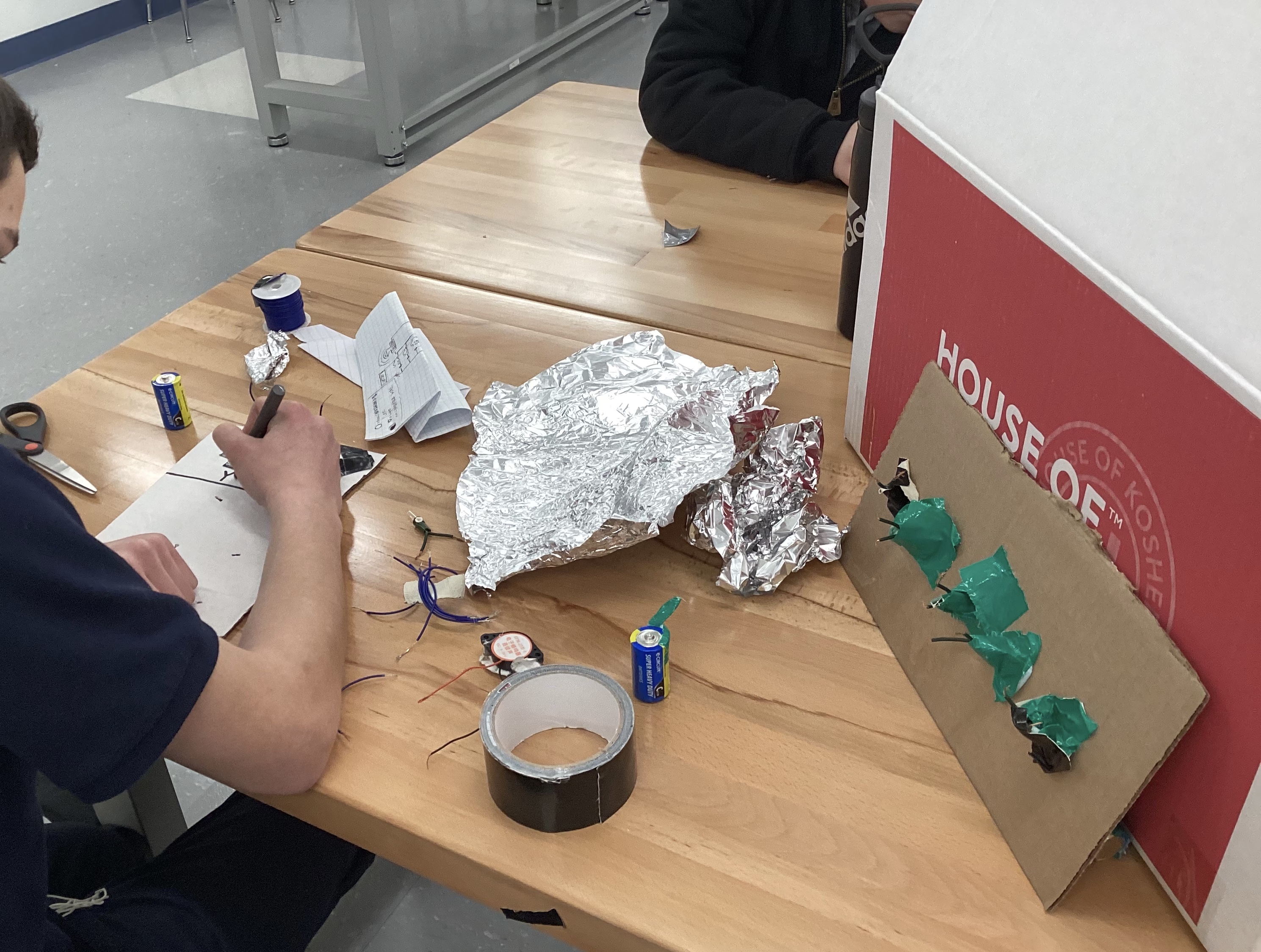
Embracing The Mess: Why a “Messy” Science Classroom is a Good Thing
January 2024
Guess what? That’s a good thing! A messy classroom isn’t a sign of failure, it’s evidence of active engagement, creativity, and perseverance! If you’re working on a STEM project, students will be messy, but with the right strategies, you can manage the chaos and teach them important lessons.
Why is Messiness Part Of The Process?
When I’m working with the students on hands-on projects like building electrical arcade games or Rube Goldberg machines, the messiness means students are diving into problem-solving. They are brainstorming, testing ideas, troubleshooting, and yes, even getting frustrated.
That frustration? It’s not something to avoid. I tell the students before they even start their projects that they WILL be frustrated and they will have false starts. It WILL be annoying, but then they will be rewarded when they figure it all out. It is a natural process and we compare it to what scientists go through.
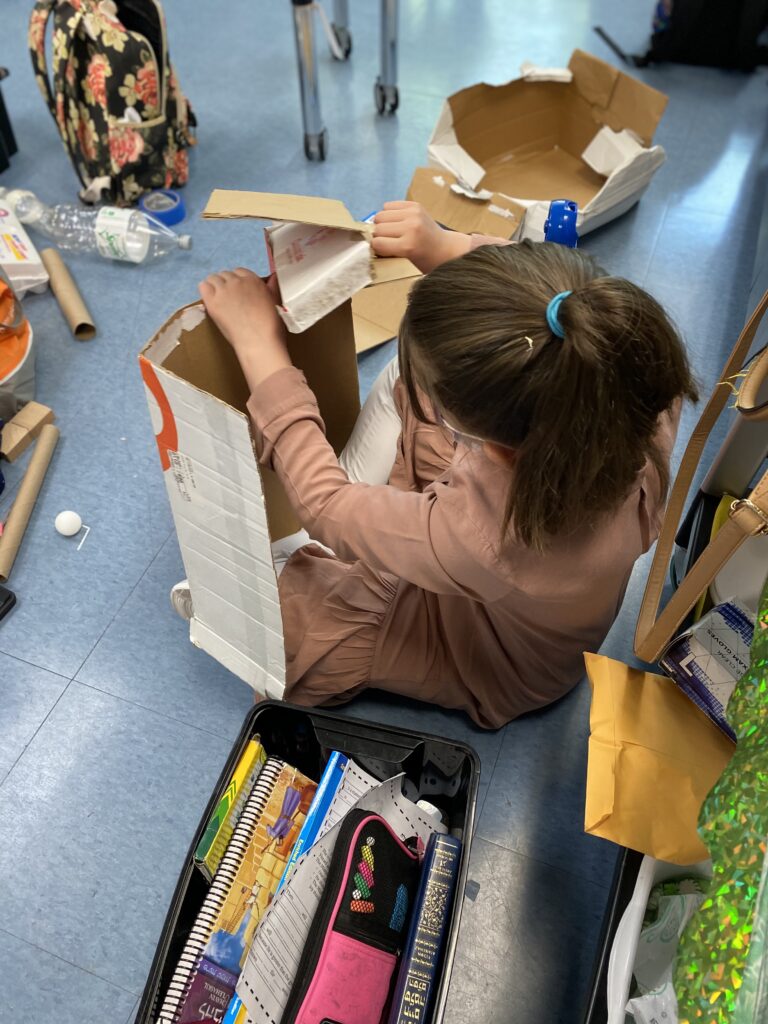
Teaching Students to Embrace Frustration
When the students are working with electrical circuits it is guaranteed that not all of the wires and connections will lineup perfectly the first time. They will need to keep trying until they get it. The squeals of delight around the room are wonderful when they finally get something to work!
How many times do they need to test the marble going down the Rube Goldberg machine before it actually drops where they want it to?
I like to try to direct the narrative so instead of them saying “this isn’t working!“ they should try to say “what else can I try?” Instead of saying “I’m bad at this” ask them to say “I’m still figuring this out”.
Having lots of materials around them, helps the students experiment with new items as they use trial and error.
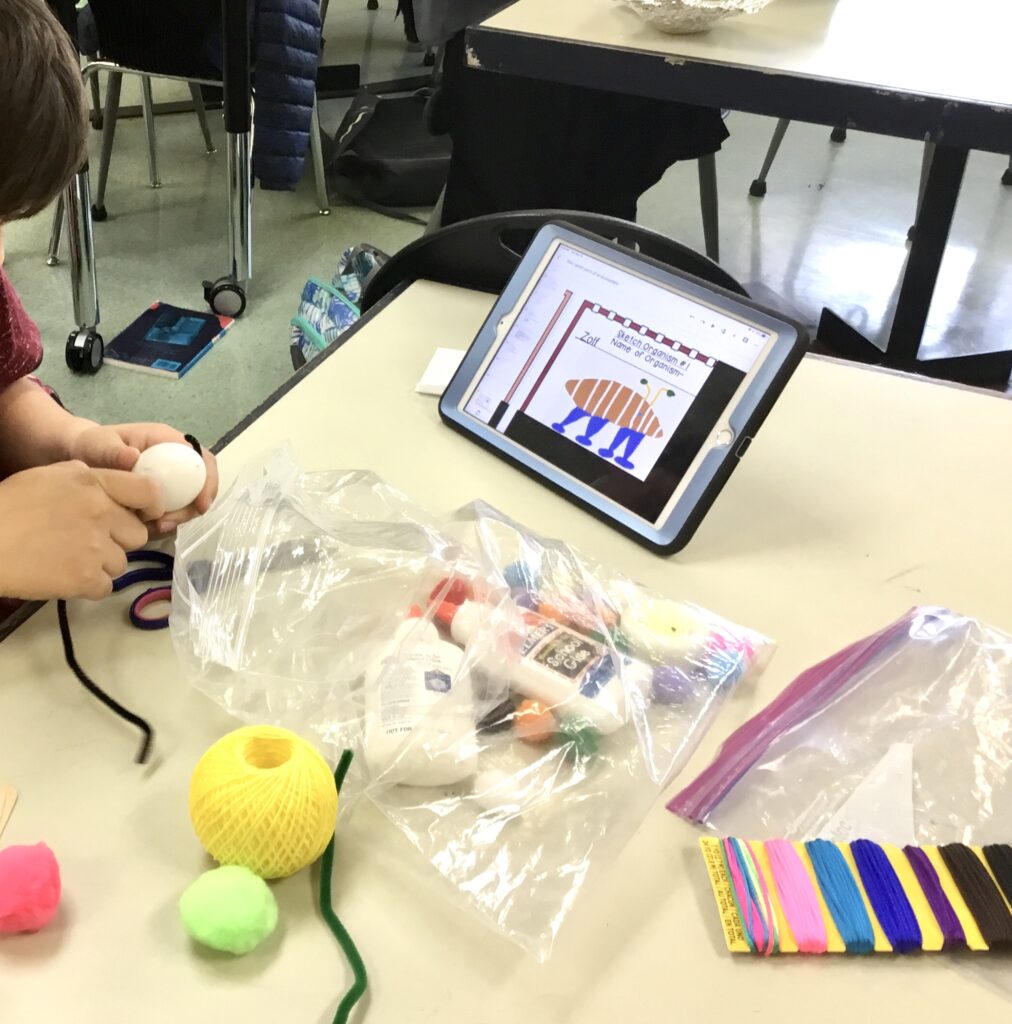
Keeping The Mess Productive
Messiness doesn’t mean you have to have chaos. You can encourage creativity while still asking the students to stay focused and accountable. I use these three strategies during projects:
Set clear guidelines for materials and behavior. Before the students even start, go over your expectations as to how to use the materials responsibly. There will be no playing around with the tools or supplies unless they’re actively working on the project. Where will the materials be stored and exactly HOW will they clean up?
Use a daily check-in form. This has been a game changer, since I started doing this years ago, to keep the students accountable and ensure that they’re making progress. I have them complete a simple check-in form each day at the end of class. They also do a brainstorming session before they even begin so they have a relatively clear plan as to what they will be doing.
Use backwards planning for the cleanup time. I talk about backwards planning in many other blog posts, but basically you plan from the end of the class to the beginning of the class.
Realistically estimate how long it will take this particular class to clean up and put their projects in a safe place. Make a cold stop at that point and have them start cleaning. I usually give them 10 to 15 minute warnings, before that cleanup, so no student is surprised.
Conclusion
A messy classroom filled with engaged, frustrated and determined students is a beautiful site.
I like to call it my Dunkin’ Donuts moment. What does that mean? It means that the students are so caught up in what they are working on that they are not even aware of where I am. Theoretically I would have time to run out, get a coffee and come back and they would never know I was missing!
So the next time your classroom looks like a whirlwind of circuits, marbles, and duct tape, don’t stress out. Smile and remind yourself that this is where discovery happens. It is my absolute favorite part of teaching!
Check out my blog posts on my specific projects and how to execute them in your classroom.
Science Projects-10 Questions to Ask Yourself Before Assigning One


